
By Meg A. Parsont
The dog days of summer have arrived early this year, and New Yorkers and visitors to the city are panting for ways to beat the relentless heat and humidity. Abutting the Gilder Center at the American Museum of Natural History on Columbus Avenue (77th to 81st Streets), comprising close to two acres, the newly renovated western portion of Theodore Roosevelt Park provides leafy refuge from the heat, just when we need it most.
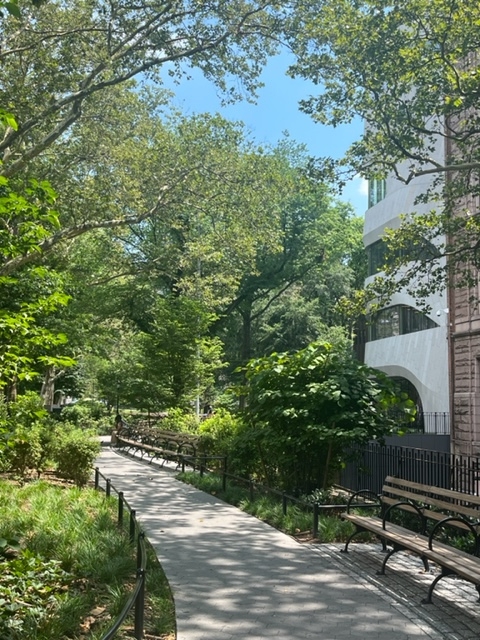
With over 20 new oaks and elms supplementing the existing mature trees, the park now has a continuous canopy of greenery overhead, enhanced by another level of flowering trees like dogwood and redbud, extensive new plantings of native and pollinator-friendly perennials, evergreen and deciduous shrubs, ferns, and a lush lawn. With the addition of a number of new benches, the park is ready to welcome those seeking a quiet place to chill.
Landscape architecture firm Reed Hilderbrand consulted the 1870s plan of architect and landscape architect Calvert Vaux (who was also Frederic Law Olmsted’s partner on the design of Central Park) to develop a new design for the western portion of the park. The renovation “recalls the roots of the original plan,” notes Lydia Gikas Cook, Senior Associate and Project Manager at the firm.
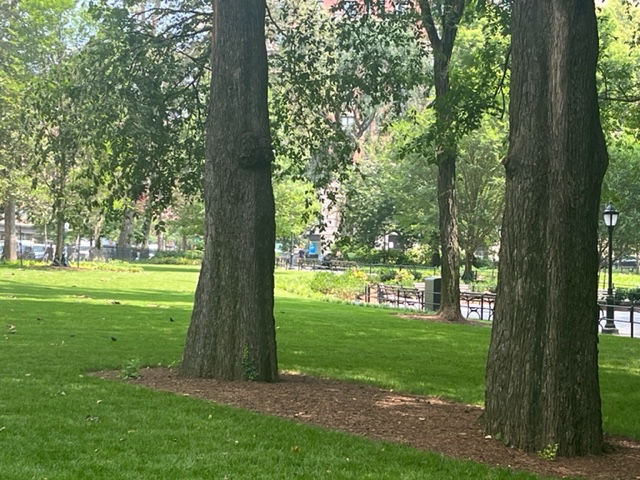
Reed Hilderbrand preserved decades-old elm and oak trees and re-used plantings and soil from the previous incarnation of this portion of the park. It also reconstructed two stone piers from the original entrance, now placed on either side of the new central entrance. This entrance is three times as wide as the original, making the park more accessible from Columbus Avenue and hopefully encouraging more neighborhood interaction. A second, more intimate entrance has been added just north of 77th Street. With a brand-new bench-lined pathway wending its way along the edge of the museum, this section has the feel of a true community park.
As John Grove, Reed Hilderbrand’s partner in charge of the renovation, explains, their goal was to create a space that accommodates both visitors to the museum and those in the neighborhood who just want to relax and enjoy the park. From the open paved area around the Nobel Monument to the lush lawn of the Margaret Mead Green, which will open up to visitors once the sod has settled in, the park offers many welcoming spots.
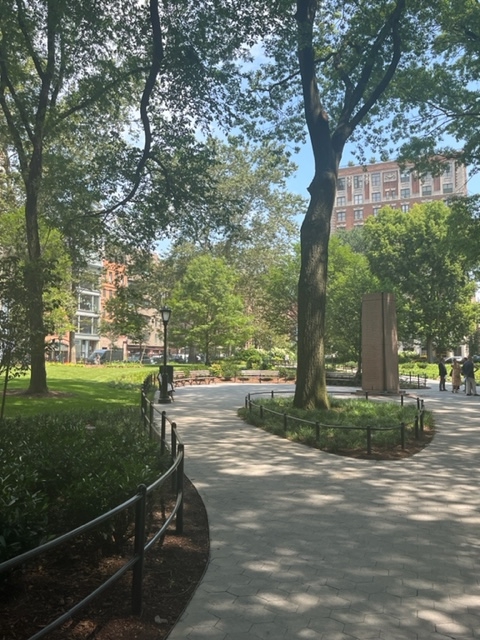
Sinuous pathways meander through the restored section, creating flow and continuity through the park. Grove explains that these fluid walkways also made it possible to shift the path as needed to work around major root systems of existing trees. Other new features of this portion of the park include improvements to the infrastructure, such as regraded walkways with less slope in areas to eliminate drainage problems and the addition of a 100-foot-long storm water retention tank under the Margaret Mead Green to help support water flow.
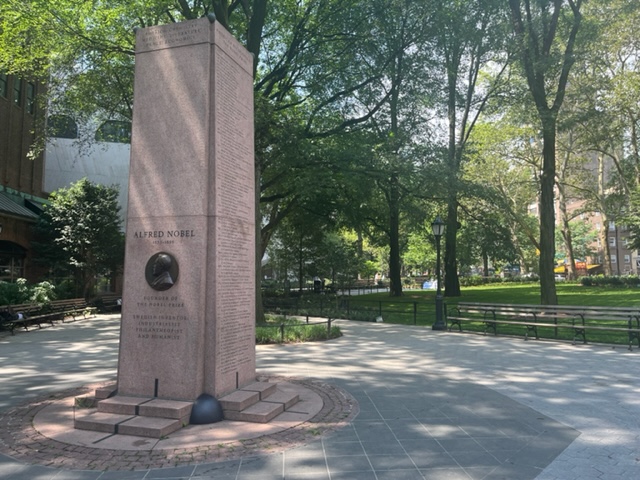
Sean M. Decatur, President of the American Museum of Natural History, notes that the renewal of this portion of the park presented “a great opportunity to connect the museum and the community.” The renovations were developed in collaboration with the Park Working Group, which was formed in the early stages of the project and met dozens of times throughout the course of the project. This group was co-chaired by the Museum and Friends of Roosevelt Park, and its members included representatives from the offices of then Manhattan Borough President Gale Brewer, then New York City Council Member Helen Rosenthal, Assemblymember Linda Rosenthal, NYC Parks, Community Board 7, the West 77th Street Block Association, Theodore Roosevelt Park Neighborhood Association, the Defenders of Teddy Roosevelt Park, and the Columbus Avenue Business Improvement District.
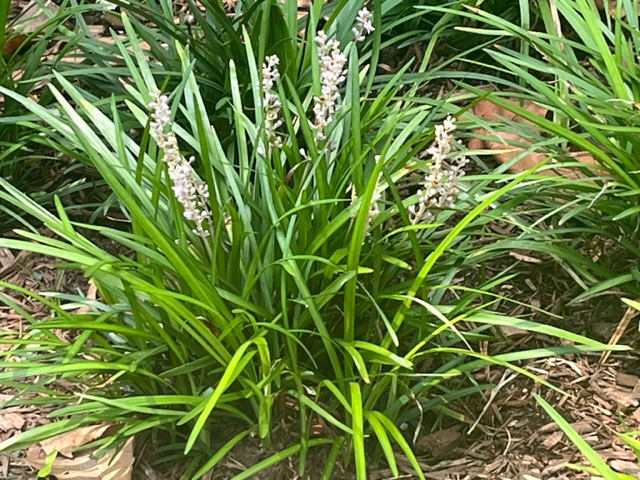
The Museum is responsible for the maintenance of the entrance area in front of the Gilder Center, and the New York City Parks Department is responsible for park and plant maintenance, with a dedicated gardener assigned to the park.
This is an exciting time to experience the rejuvenated portion of the park as the new plantings are starting to fill in, the oak-leaf hydrangeas are taking on a lovely mauve tone, and the lavender-colored flowers of dozens of liriope and hostas are starting to bloom. The weather forecast for the foreseeable future is hot and humid, and Theodore Roosevelt Park offers an opportunity to slow down, relax, and cool off.




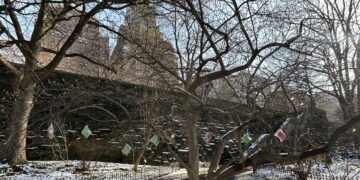




How lovely to have a lush green park planned specifically for quiet relaxation. No bikes, runners, playgrounds or playing fields, all of which are available close by in Central Park. Great job by the Park Working Group
Just a gorgeous park to relax in with lush green lawns and spectacular plants, such class of choice trees and planting. What a wonderful job they did. The Richard Gilder Center for Science, Education, and Innovation is spectacular‼️
I love the dog run they offer to the neighborhood.
My family and I took a wonderful VIP tour they offer with lunch at the new café called The Restaurant. I can’t wait to have my nephews and nieces come visit me during the holidays and I’ll do the same for them as my family did for me.
Thanks for a lovely article!
Nice. Can’t wait to go there!
Great article – thanks! Any comment from the 81st Street crowd who were so up-in-arms about the Museum even touching the Park? WSR was so good at covering their protests; it would be good to have follow up from them now that the work is done (and done so splendidly, too).
Sorry the green space is smaller now, but it does look good still.
Over 20 new trees were planted and more green space was added and the one 100 year old tree that everybody protested that had to come down was already rotten from the inside! Just goes to show that the protesters had no idea what they were talking about. The place is beautiful and I can’t wait to show it off to all my friends and family.
Thank you for beautifying the park.
Not a word… it’s like they never exist.
They sort of all disappeared during the pandemic, as well as the 79Th St., crew. I really don’t expect to hear from that crowd anymore, just as well we get on with our lives and enjoy this most beautiful park. It’s been a long five years. And if you remember, it wasn’t very pleasant before that. I’m here 55 years and I’ve never seen the park look so beautiful. I’m just beside myself. Every day I take a walk through sit down enjoy my surroundings and think how thankful I am living here here on the UWS, hallelujah, hallelujah.!
What a beautiful gift!
A round of applause to my friends, neighbors, and the great crew and team that work so hard on this project to make it like it is today.
As being on the Construction Committee, I love to give a big shout out to Zachary Campbell from the American Museum Natural History …who kept us in touch on the every day procedures for the past five years.
Bravo! 🙏
What a beautiful reply, Billy!
Good for you. We are so happy you’re so proud of our neighborhood and supportive. We need more people like you.
Yes, but size matters.
Yes, and the amount of space actually available as a park for strolling or sitting is not only much nicer, it’s also bigger.
Great article, Meg! It all looks so lovely.
What happened to the time capsule?
Yes, when and where will they put the Santiago Calatrava-designed time capsule back ?
The Time Capsule is stored inside the planetarium right now. The plan is to upgrade the green area in the front of the planetarium and facelift the planetarium in June 2024 of which the Time Capsule will be included outside the new facelift of the planetarium.
UWS Residence should be very proud what the American Museum of Natural History has produced in the past five years to make this park so beautiful and inviting to your family, friends and neighbors.
As your neighbor, for the past 53 years, I encourage everyone on the UWS to support and enjoy your surroundings what this museum has given back to you the last 5 years.